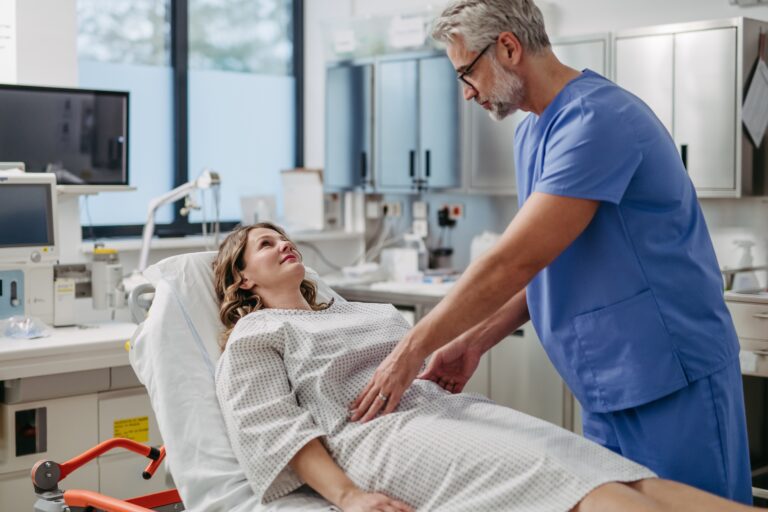If you are taking prescribed anticoagulants (blood thinners) such as Coumadin or Plavix, you should ask your physician for instructions prior to the procedure. Patients should not take over-the-counter aspirin or aspirin-containing medications for at least 5 days prior to their paracentesis. Please consult with your doctor or healthcare provider before stopping ANY medications.
You will be asked not to eat for 6 hours prior to the procedure. You will be encouraged to drink clear liquids up to 2 hours before the procedure and asked to take nothing by mouth after that.
Please arrive for your paracentesis with a responsible adult who can drive you home.
After you arrive for your appointment, you will be escorted to a procedure room, where you will be asked to change into a patient gown. You will be positioned on an exam table, and ultrasound will be used to locate the fluid in your abdomen and choose the most appropriate puncture site. The skin will then be cleansed, and a small amount of local anesthetic (lidocaine) will be injected into the skin with a small needle. You will feel a tiny pinch similar to a pinprick while the anesthetic is injected.
After the area becomes numb, the radiologist will insert the paracentesis needle and connect it to tubing that will drain the fluid into a vacuum bottle. After an appropriate amount of fluid has been collected, the needle will be removed, and a bandage will be applied. You will be monitored for approximately 15-20 minutes prior to discharge.
For your safety and the protection of others, we do not allow anyone other than patients in our exam rooms.
Most paracentesis procedures are very well tolerated, with minimal discomfort afterwards that is usually easily controlled with non-prescription pain medication. Significant complications associated with paracentesis are rare and are usually secondary to bleeding, infection, or injury to abdominal structures. However, if you experience increasing pain, shortness of breath, or weakness after returning home, contact your physician or healthcare provider immediately.
If your paracentesis is diagnostic in nature, your doctor or healthcare provider will receive separate reports from the radiologist and the laboratory where the fluid sample was sent for analysis. After receiving these reports, your doctor or healthcare provider will be able to discuss the results with you.
Reports are also available on the Patient Portal


